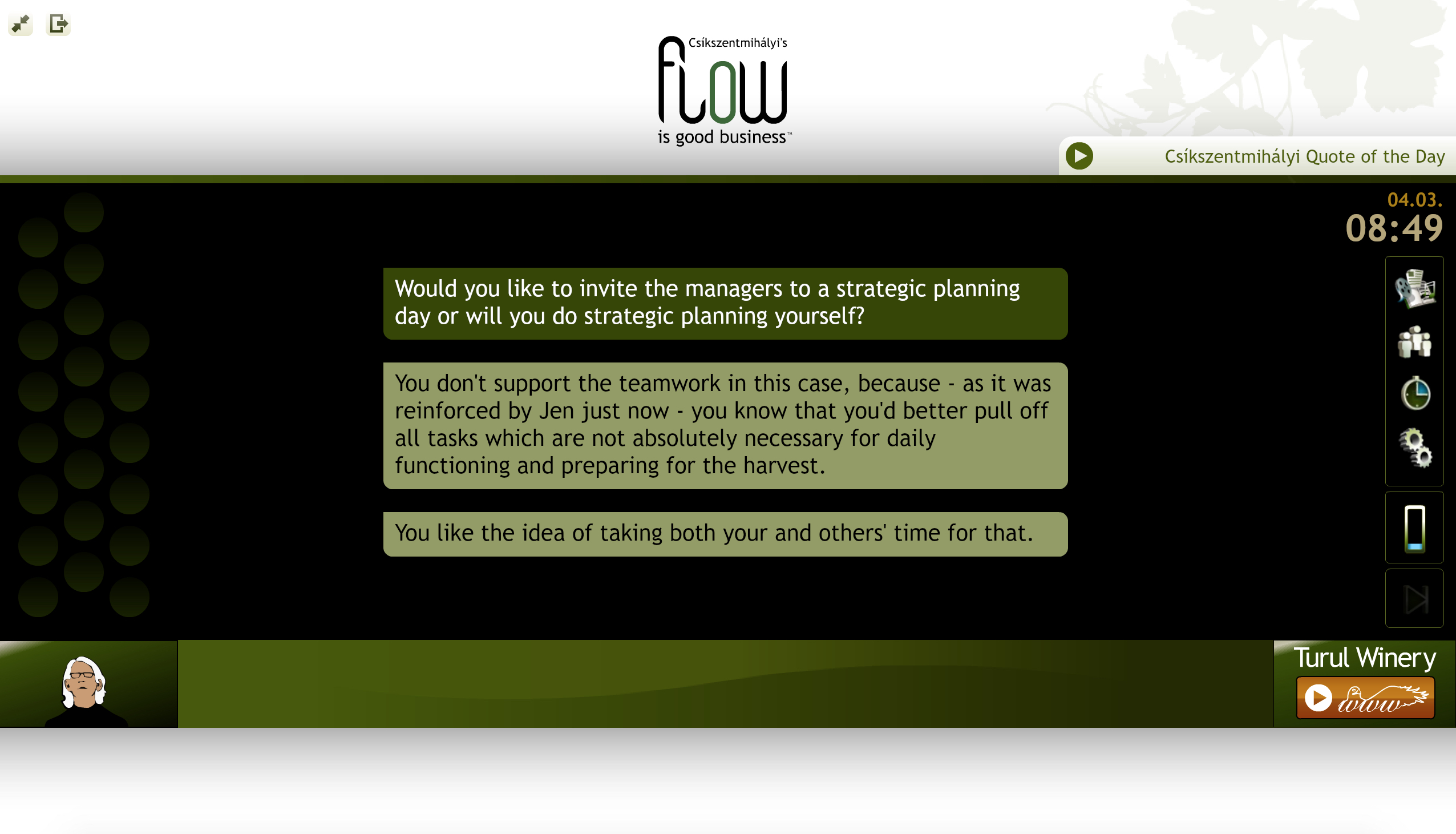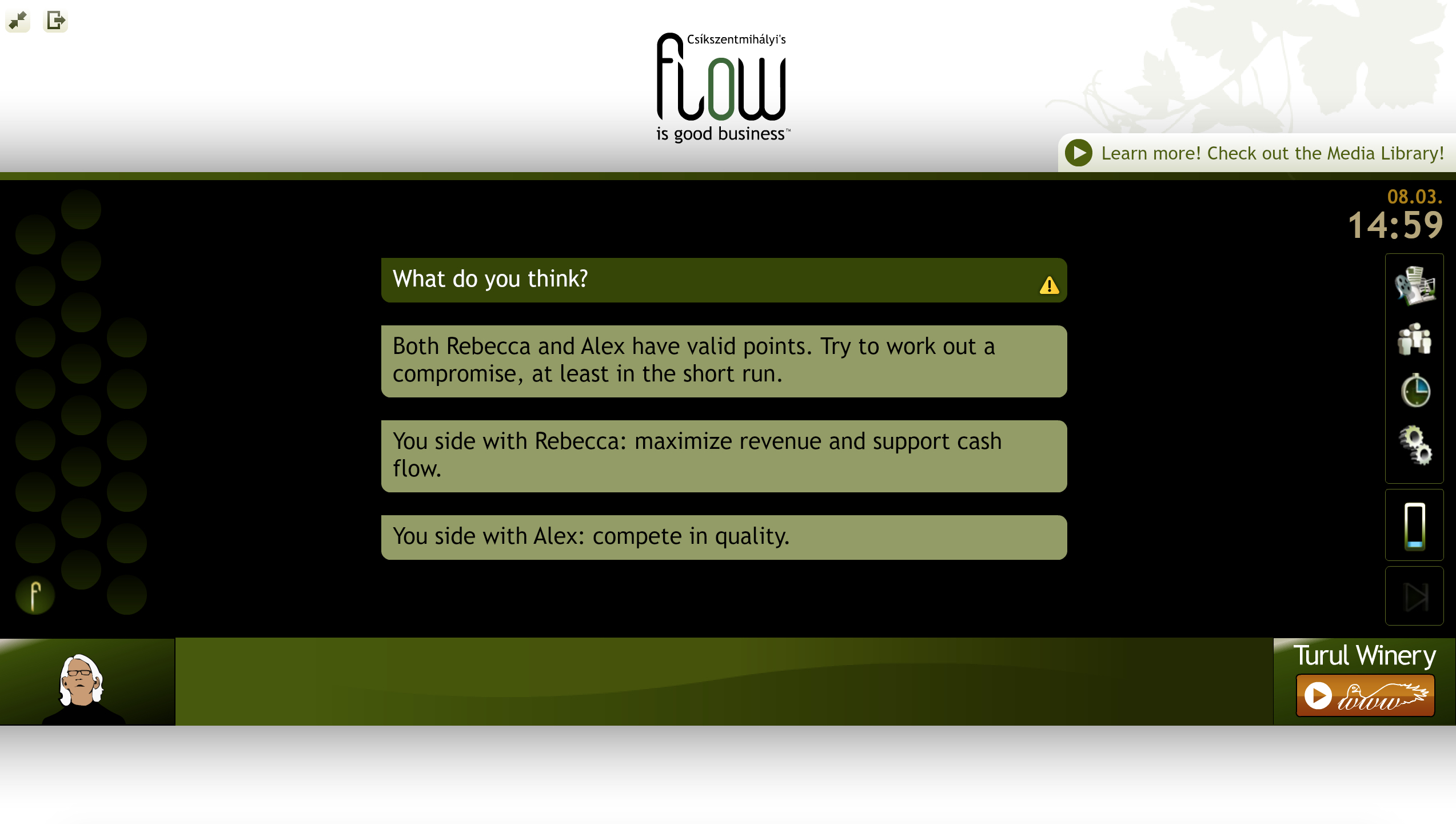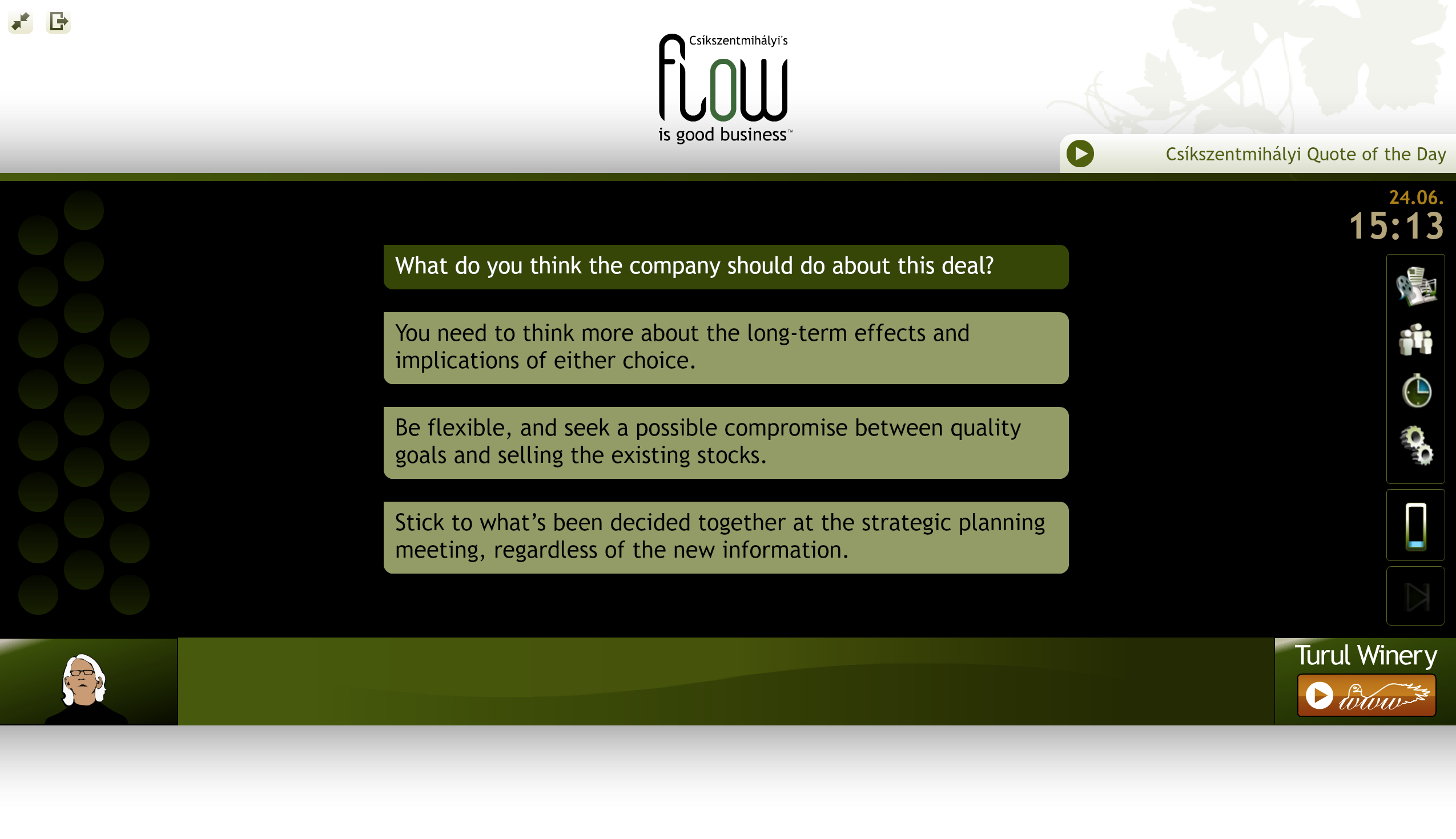Teaching Blue Ocean
Strategy and Leadership
The FLIGBY lab was contacted recently by one of our North American academic partners to find a way for using FLIGBY teaching Blue Ocean concept. Since FLIGBY was used already for explaining and demonstrating many different leadership approaches, we were happy to help to create a comprehensive syllabus for the “Blue Ocean” class too.
Our recommendations were based on the following definitions:
- Blue Ocean Strategy – Traditional competition-based strategies (red ocean strategies) are not sufficient to sustain high performance. Companies need to go beyond competing. To seize new profit and growth opportunities they also need to create blue oceans. Blue Ocean Strategy is referred to as a market for a product where there is no competition or very little competition. This strategy revolves around searching for a business in which very few firms operate and where there is no pricing pressure.
- Blue Ocean Leadership – The insight for “Blue Ocean Leadership“, created by W. Chan Kim and Renée Mauborgne, is that leadership, in essence, can be thought of as a service that people in an organization either “buy” or “don’t buy”. Kim and Mauborgne observe that every leader has customers: bosses to whom the leader must deliver performance and followers who need the leader’s guidance and support to achieve. Blue ocean leadership can unleash the ocean of untapped talent and employee potential in organizations. “Blue Ocean Leadership” looks to the field of strategy to inform the practice of leadership in business.
The link between FLIGBY and “Blue Ocean Leadership”
Although FLIGBY promotes a Flow-based management approach, the leadership challenges and the options it presents are fully compatible with the “Blue Ocean Leadership” ideas.
Here are some examples:
- The key statement that summarizes the Flow concept’s relevance to management and leadership is that the best way to manage people is to create an environment where employees enjoy their work and grow in the process of doing it. This is completely in line with the “Blue Ocean Leadership” idea. “Blue Ocean Leadership”, for example, focuses on what acts and activities leaders need to undertake to boost their teams’ motivation and business results, not on who leaders need to be.
- FLIGBY (and “Blue Ocean Leadership”) stress that before making an important decision, the impact of alternatives on employee engagement (whether through the Flow states of individuals or through their effect on the corporate-atmosphere) should also be considered. This does not mean that generating Flow or improving the corporate atmosphere should always have priority over other considerations! It means only that the impacts on Flow and on the corporate atmosphere should not be neglected when an important decision is made.
- FLIGBY is based on an Extended Concept of Leadership. Leadership is relevant to any adult individual, even if he or she is not formally a manager or a leader. Most of us have permanent or situational leadership roles, for example, in our families, in our social groups, as freelancers, and at the workplace. Since we have such roles, to be more effective is a benefit. Adopting the recommendations of the Flow-promoting leadership concept will enhance the meaning of our individual lives. “Blue Ocean Leadership” is designed to be applied across the three distinct management levels: top, middle, and frontline. Extending leadership capabilities deep into the front line unleash the latent talent and drive of a critical mass of employees, and creating strong distributed leadership significantly enhances performance across the organization.
Using FLIGBY for testing/measuring Blue Ocean Leadership
FLIGBY was designed to test and measure special leadership competencies. Each player‘s leadership profile is comprised of his or her scores on each of the 29 leadership competencies. The profiles are automatically generated at the end of the simulation for those who had completed the Game. The continuous recording of every stroke of every player, as well as the complex statistical analysis of the results, are done routinely in the automated and pre-programmed algorithm embedded in FLIGBY’s sophisticated Master-Analytics-Profiler (MAP). The four basic approaches of the “Blue Ocean Leadership” can be custom-made from the 29 FLIGBY skills.
Based on the study of W. Chan Kim and Renee Mauborgne, “Blue Ocean Leadership” has four approaches. In other words, making the “Blue Ocean strategy” work, organizational success requires contextually four different sets of skills. Each such “blend” can be custom-made from the FLIGBY 29:
- “See your leadership reality” – Without a common understanding of where leadership stands and is falling short, a forceful case for change cannot be made. To test and measure this complex competence, the following combination of FLIGBY Leadership skills can be used: Personal strengths; Empowerment; Entrepreneurship (Risk-taking); Business-oriented thinking.
- “Develop alternative Leadership Profiles” – Exploring what effective Leadership Profiles would look like at each level. To test and measure this complex competence, the following combination of FLIGBY Leadership skills can be used: Personal strengths; Analytical skills.
- “Select to-be Leadership Profiles” – The to-be Leadership Profiles of both frontline and senior management help clear the path to change. To test and measure this complex competence, the following combination of FLIGBY Leadership skills can be used: Conflict management; Involvement; Organizing; Empowerment; Motivation; Delegating; Engagement and trust.
- “Institutionalize new leadership practices” – Through the changes highlighted by the to-be profiles, the management will be able to deepen its leadership strength and achieve high impact at a lower cost. To test and measure this complex competence, the following FLIGBY Leadership skill can be used: Execution.
The applied significance of the above capability to recombine the 29 FLIGBY skills into the four “Blue Ocean Leadership” categories, is that by playing FLIGBY, it is possible to determine the current skill profiles of the given student cohort. This way, it is thus possible to identify skill gaps.
Teaching Blue Ocean – Possible decision points for group discussions
FLIGBY’s narrative context gives a great opportunity to start group discussions around “Blue Ocean Leadership”. The following decision points of the FLIGBY simulation could give the right reference for demonstrating the related strategic approaches:
Decision point #09

- The dilemma: Shall I draft the strategic plan alone, or should I invite the entire team for a strategy meeting?
- Preferred solution: You like the idea of taking both your and others’ time for that.
- Explanation: A strategy-building process should be managerial and cross-functional teamwork to get a holistic view of the company situation, problems, and opportunities. Making a strategy alone makes a little sense in a competitive environment, especially in your “newcomer” status. Participation in the strategic planning process is likely to be strongly motivated by your management team.
Decision point #23

- The dilemma: Should the priority be wine quality (Alex’s view) or revenue (Rebecca’s view)?
- Preferred solution: Both Rebecca and Alex have valid points. Try to work out a compromise, at least in the short run.
- Explanation: Although there are indications from Bob, the owner, and key members of the team that a focus on quality will be the strategic priority, in the long run, this is not the time to undercut a valuable employee, like Rebecca. A compromise in the short run is likely to be necessary, given the commitments already made. Furthermore, it would be not prudent to make a definite decision when the protagonists are so emotionally charged.
Decision point #53

- The dilemma: Based on the new information about the opportunity to sale this lower quality Zinfandel (both existing stock and continuous sale on a long-term contract) you agree with Rebecca, or Alex or seek a compromise.
- Preferred solution: Be flexible, and seek a possible compromise between quality goals and selling the existing stocks.
- Explanation: It is important to make a distinction regarding Zinfandel between selling the large existing stock, versus entering into a long-term contract to continue to produce it. Discarding 2,000 cases of Zinfandel in stock would be a huge loss, which could not be justified. On the other hand, discontinuing future production would be consistent with the decision made at the strategy meeting.
We hope the above examples will give you some new insights about using FLIGBY for demonstrating/teaching/testing complex leadership topics like “Blue Ocean Strategy”.
Download FLIGBY’s sample syllabus here





